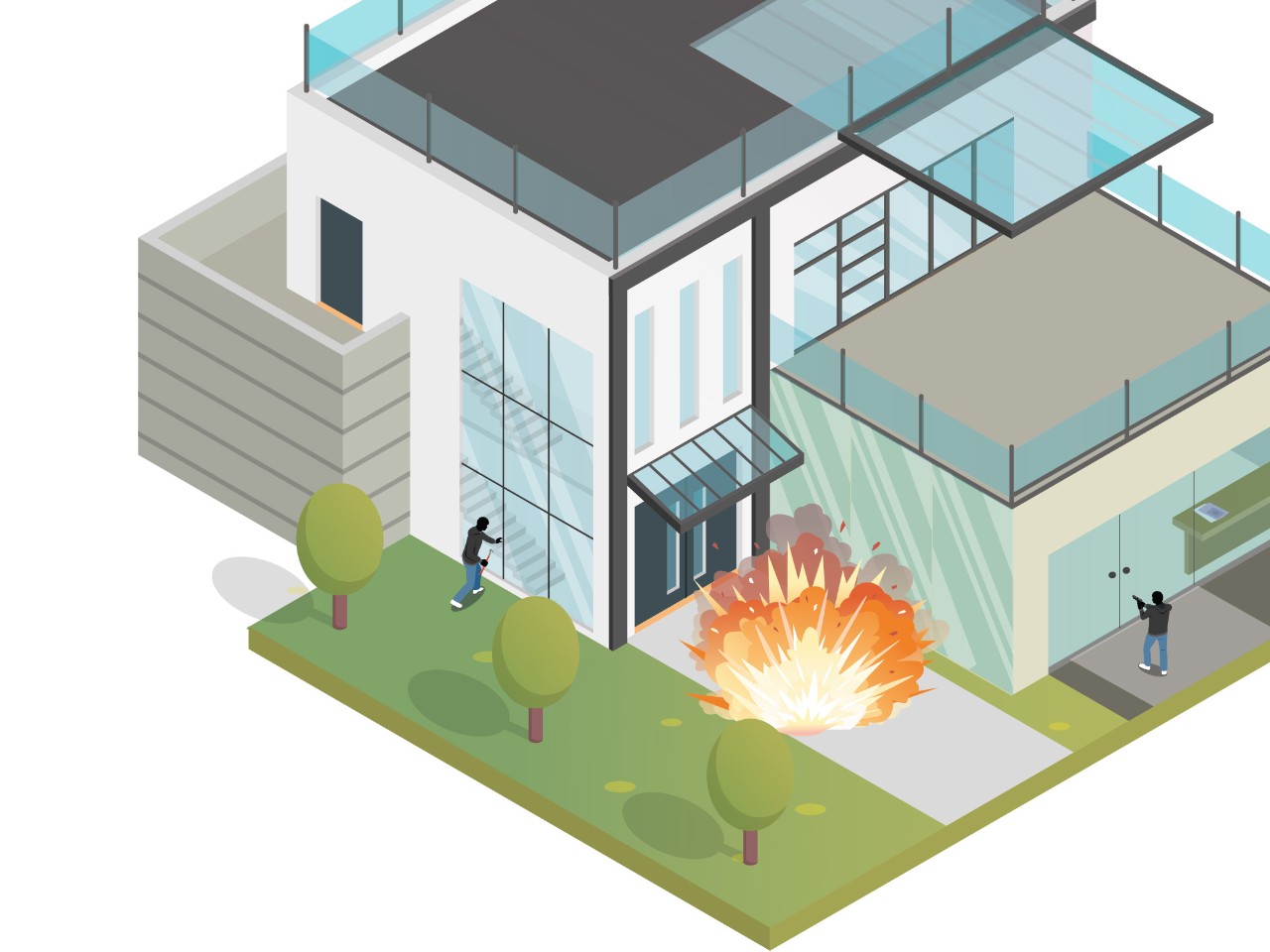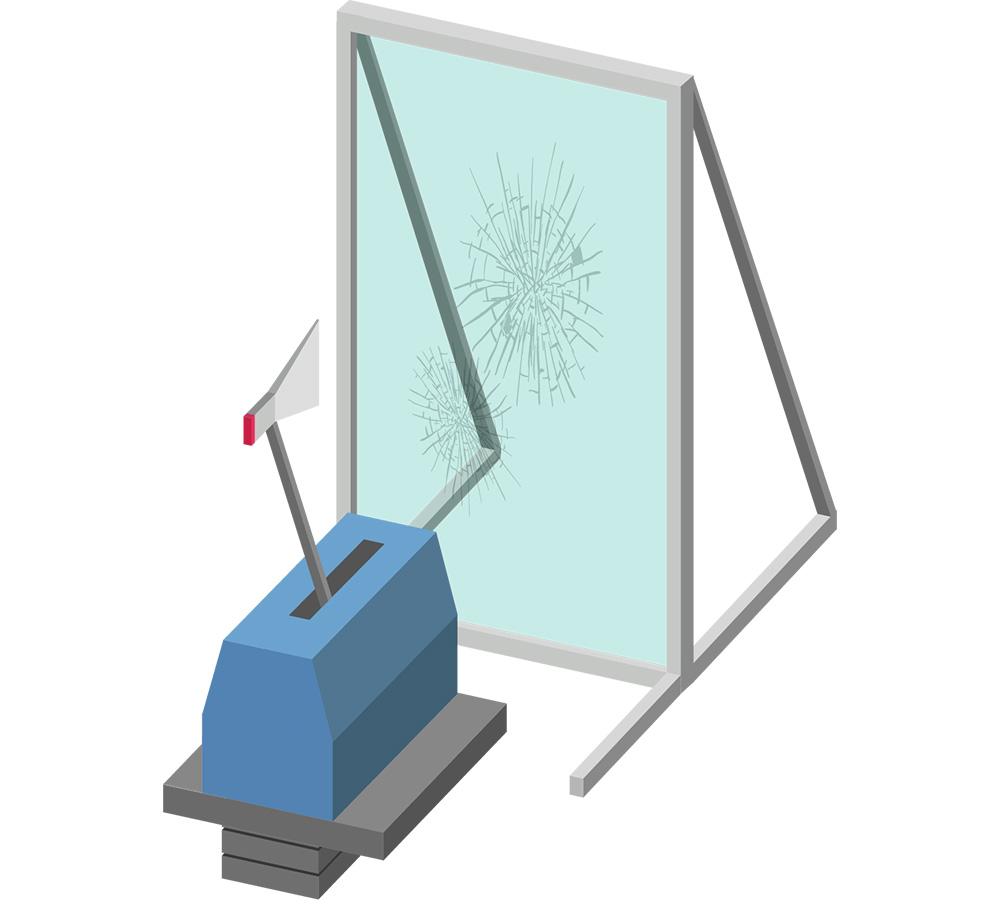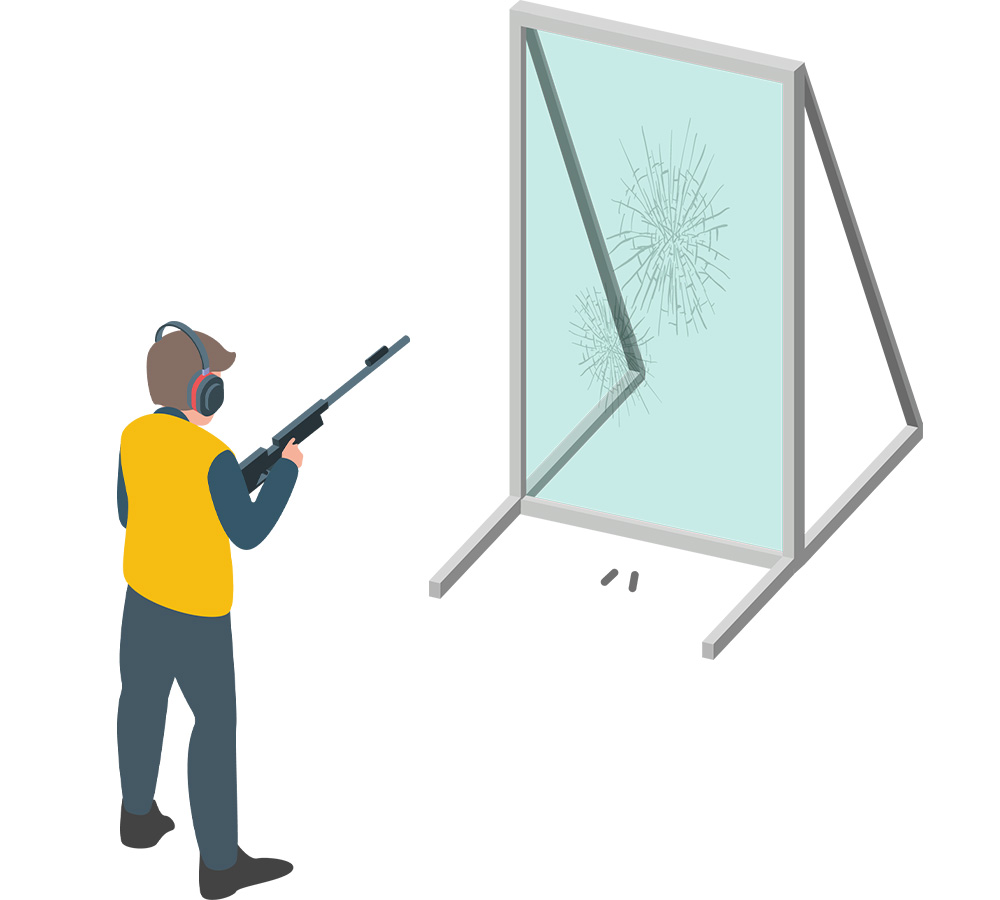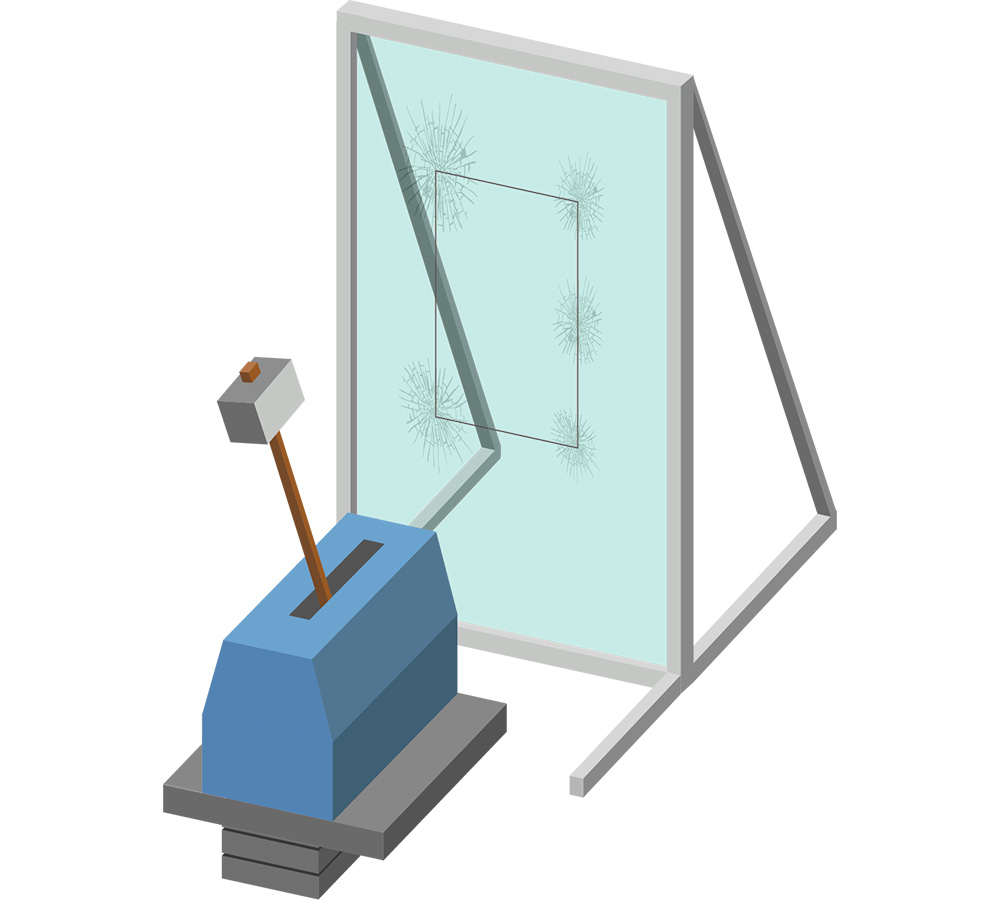Security glass
Protect from injury or loss due to intentional actions

Security glass typically refers to laminated glass designed to withstand complex loads and high impact forces from intentional threats. Applications include:
Applications include:
- Burglary resistance, common applications for commercial and retail stores for theft protection
- Forced Entry resistance, typically required for banks and museums to prevent intruders.
- Ballistic resistance, typical applications include police stations, courts, embassies and, security sensitive projects to provide a safety barrier against ballistic attack.
- Blast protection, common applications for federal buildings to reduce injury from flying glass fragments broken due to blast pressures and minimize interior damage.

👉 Expert talk
“Each of these applications is defined by a standard. Guardian Glass team of experts can recommend what security glass is the most suited to your project based on local regulations.”
Which security glass for what application? Performance and test
The performance security glass has to achieve vary depending on local building code standards, on the application and specific requirements of the project.
Burglary Resistance or anti-theft glazing
Commercial stores and high-end retail displays, for example, use transparent glass to display merchandise and to attract customers. However, these applications face the need to protect their valuable items from “smash and grab” thieves. Security glass provides a very high level of penetration resistance to protect people and items. Depending on the security level, double or multi-pane laminated glass can be used to delay the attack and allow authorized personnel to arrive and address the situation.

Test Procedure
Test procedures for burglary resistance glass involve the use of various weapons to break the glass and measure the number of attacks that it takes to create an opening in the glazing material. There are many test standards available to determine the security level of burglary resistance systems. These standards are similar in the test procedures but have some differences in terms of weapon types and rating performance.
Ballistics resistance
Security glass can be used in a ballistic resistance glazing system to withstand bullet penetrations and minimize injury from ballistic attacks. Ballistic resistance glazing typically consists of laminated glass constructed with multiple glass layers and a plastic material as the final layer on the interior side for spall protection.

Test procedure
Test procedure involves glazing subjected to several shots from a particular weapon. Security performance level for ballistic resistance glass is determined by the ability of the glass to resist bullet penetration from a specified weapon in association with the number of shots and the quantity of spall fragments.
Forced Entry Resistance
This application usually involves an attempt to create an opening in the glass that allows intruders to enter the building. In some countries, the standard for forced entry resistance may be the same as anti-theft glazing, but in other countries such as the U.S. forced entry is described in a specific standard.Laminated glass with two or more glass panes can potentially be used for forced entry resistance depending on the level of resistance required for a specific project.

Test Procedure
Performance testing for forced entry resistance is similar to burglary resistance with minor differences. In North America the testing is carried out using different elements to attack the glass. These elements include the use of larger blunt objects, sharp tools, chemical agents and ballistics in attempting to create an opening. Some examples of the test elements include a sledgehammer, wood saw, propane torch, acetone, and gasoline.
Blast protection
Security glass offers protection against flying glass shards from bomb blasts and for better absorbing the blast force. Bomb-blast mitigation performance applies to the overall glazing system performance. Laminated glass is often used in combination with an engineered framing system. Therefore, it is recommended to engage an experienced protective design consultant for the design of glazing and framing systems for bomb-blast protection.

Test procedure
Test procedure typically involves subjecting the glazing system to a specific air blast load generated from an explosive charge or test equipment.
Security glass Standards and Conformance
Security glass configurations are designed to help protect building occupants from injury or loss due to deliberate or intentional actions.
There are many standards covering test methods and performance of security glass. The list shown here are some examples. In the US, there are several standards that address specifications and test methods of security glass for anti-theft protection, force entry resistance, ballistic resistance, and bomb-blast blast protection. In Europe, the standards are: EN 356 (Impact resistance against manual attack – burglary, forced entry), EN 1063 (bullet resistance), and EN 13541 (Resistance against explosion pressure).
Other regions of the world may have different standards for security glass.
What is the difference between safety and security glazing?
Safety is defined as the condition of being protected from injury or loss due to accidents or natural causes. Some regions refer to this condition as passive safety.
Security is defined as the condition of being protected from injury or loss due to deliberate or intentional actions including burglary/forced entry, ballistics, and bomb-blast. Some regions refer to this condition as active safety.
Learn more about Safety and Security glass in our dedicated online training module.

Want to know more about security glass?
Learn more about Safety and Security glass in our dedicated online training module and access a wealth of technical notes, tools and online learning on the Resource Hub!

Whether you're drawing skyscrapers, remodeling homes or designing a new project, our team of glass experts is ready to help you find the right glass for your project.
